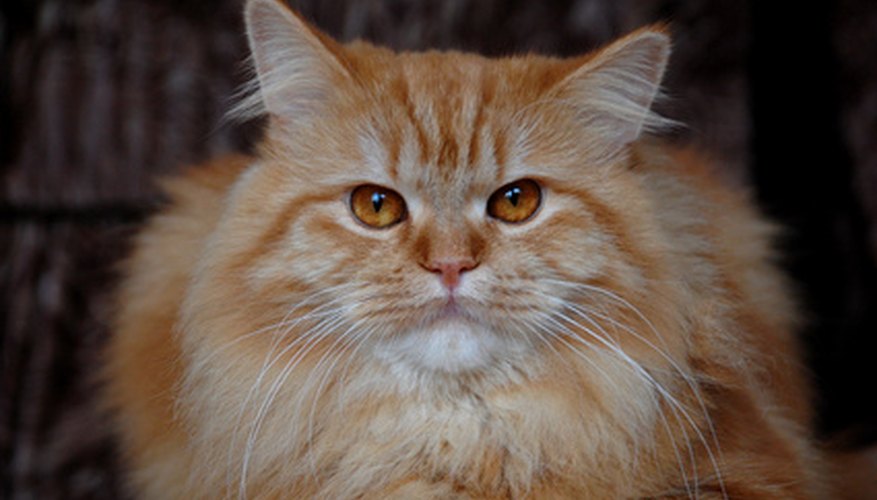According to Feline Advisory Bureau, diabetes in cats is caused by a deficiency of insulin, the hormone that regulates uptake of glucose and other substances by tissue cells. Because not enough insulin is present to regulate the amount of glucose made and released by the liver, a diabetic cat has abnormally high glucose levels in its blood and urine. A cat with diabetes needs treatments that may be costly, but they may help it live healthily for many more years.
Diagnosis
When you see signs of diabetes such as weight loss and increased thirst in your cat, it's time for a trip to the vet, according to felinediabetes.com/newdiag. If the vet identifies the cat as diabetic, the initial diagnosis and hospitalisation may cost £130 to £195. If the disease is not recognised early, the cat may be in critical condition, and the initial expenses may be higher.
Regulation
In the first few weeks or months after the diagnosis, the cat will need a few checkups at the vet's to regulate its diabetes treatment. During a checkup, the vet examines the cat's condition and learns how it has responded to medication. He makes changes to the medication based on the results. The frequency and number of checkups can vary depending on how the cat responds to the medication. The cost depends on the number of checkups and the vet's fees.
- In the first few weeks or months after the diagnosis, the cat will need a few checkups at the vet's to regulate its diabetes treatment.
- During a checkup, the vet examines the cat's condition and learns how it has responded to medication.
Essential Supplies
Once you and your vet get the condition under control, the costs related to diabetes treatments decline. The supplies that your cat need include syringes and insulin for insulin injections, and a prescription diet. These cost about £19 to £26 per month.
Monitoring Supplies
According to felinediabetes.com/newdiag, you can monitor your cat's conditions at the vet's and at home using methods such as urine testing, blood glucose testing using a glucometer and blood testing, and by simply observing the symptoms. Urine glucose testing is relatively inexpensive, below £6 for 50 test strips. Depending on the cat's condition, a blood glucose test at the vet's may be needed every six months or more frequently to determine the right insulin dose for the cat. This test can cost between £65 to £97. You might also want to conduct regular blood glucose monitoring at home, which requires a metre and test strips. The metre may cost as little as £19, and the test strips are around £22 for 50 strips that will last for months.
- According to felinediabetes.com/newdiag, you can monitor your cat's conditions at the vet's and at home using methods such as urine testing, blood glucose testing using a glucometer and blood testing, and by simply observing the symptoms.
- The metre may cost as little as £19, and the test strips are around £22 for 50 strips that will last for months.
Diet
PetsFirst.com states that a diabetic cat should be on a diet with high fibre, high complex carbohydrates, moderate protein and low fat. Depending on the specific food products you choose, this diet may be more expensive than regular cat food.
Financial Assistance
In most cases, feline diabetes management is not prohibitively costly, but it can get expensive. If you cannot afford diabetic care for your cat, ask your vet for a payment plan. You might also qualify for financial assistance from animal rescue and aid organisations. According to felinediabetes.com/vetbills, a few organisations in the United States can help owners of diabetic pets
- In most cases, feline diabetes management is not prohibitively costly, but it can get expensive.
- According to felinediabetes.com/vetbills, a few organisations in the United States can help owners of diabetic pets
